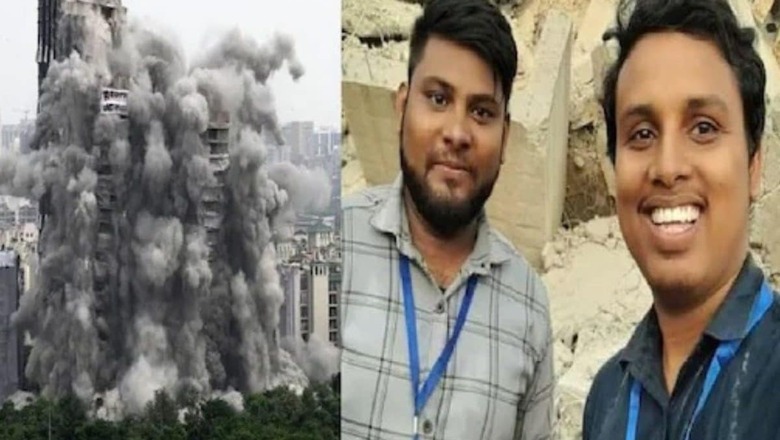
views
The demolition of Supertech twin towers in Noida has been the center of all discussion for the last week. Taller than Qutub Minar, the over 110-metre tall towers in sector 93 that had been standing for 10 years was razed in just 9 seconds on Sunday in pursuance of a Supreme Court order. A youth from Panskura, West Bengal had a huge role in this process.
At least 3,700 kilos of explosives were used to demolish the twin towers after the Supreme Court found their construction within the Emerald Court society premises in violation of norms. The two high-rises: Apex tower, which was 100 meters high, and Sian tower, which was 97 meters high, had about 900 flats. Apart from refunding the money to those who bought the flats, the builders were ordered to pay 12 per cent interest.
The official at the head of the operations of the demolition was Chetan Dutta, a Bengali engineer who has been widely covered by national media. But another Bengali, Mrinal Bhowmik from Panskura under East Medinipur police station was associated with the whole process. Bhowmik, who is a researcher in Civil Earthquake from IIT Madras reached Noida from Chaulyakudi village. Always with a gentle smile on his face, he developed good relations with everyone.
Bhowmik was involved in the Twin Tower demolition team and was one of the members included in a team of four from IIT Madras. Bhowmik did M.Tech from NIT Rourkela after B.Tech in Civil Engineering. Then now pursuing PhD from IIT Madras and has also been selected for Prime Minister’s Research Fellowship scheme. He is currently doing research on civil earthquakes.
Bhowmik said over the phone, that the twin towers had a residential area between 9 and 10 meters on one side and an oil and gas pipeline supplying across Delhi 4 meters away on the other side. “It is extremely difficult to undertake and successfully measure the human damage caused by the collapse of such a large building,” he said. He further said that the success was due to teamwork. Along with an Indian and South African institute, IIT Roorkee and IIT Madras were also included in the action.
Before the Supreme Court ordered the demolition, a preliminary test was carried out about four months ago by placing explosives on three floors of the twin towers to see how much explosives would be needed to demolish the entire building. Tests are conducted to ensure that the surrounding buildings and structures are not damaged due to the vibrations caused by the explosion. After that, about 3,500 kg of explosives were planted in each column of the entire building. On Sunday afternoon, everyone witnessed the incident.
“The riskiest task in the operation was to complete the work by saving the pipelines supplying oil and gas across Delhi as well as the surrounding settlements. And that work has been successfully completed. We are very happy with that. This is the first time such a big building has been demolished in India and I feel a bit proud to witness it,” he said.
Read all the Latest News India and Breaking News here



















Comments
0 comment